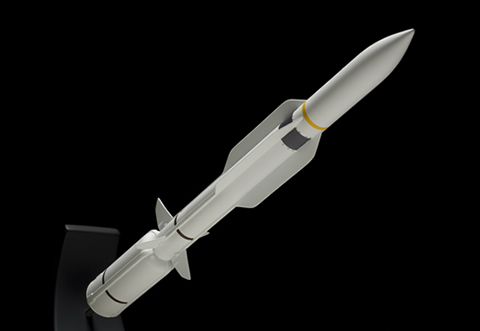
Posted on 04/26/2011 8:18:50 AM PDT by sukhoi-30mki
Raytheon delivers first of ship-defense missiles
David Wichner Arizona Daily Star
Arizona Daily Star | Posted: Tuesday, April 26, 2011
12:00 am | Comments
Tucson-based Raytheon Missile Systems has delivered the first production copy of its next ship-defense missile to the U.S. Navy for final testing.
The first Standard Missile-6, a longer-range version of the Standard Missile-2 series of ship-defense weapons, was delivered on time and on budget in March after five years of development, the company said Monday.
The first SM-6 was delivered after final assembly at the company's plant in Camden, Ark. The weapon will undergo operational testing this summer, one of the last steps before a decision to deploy the SM-6 on Navy ships, said Frank Wyatt, vice president of Raytheon's air and missile defense systems product line.
The first missile is part of an initial batch of 89 missiles Raytheon is producing under a three-year, $368 million contract for low-rate initial production awarded last year.
The latest in the Standard Missile series of ship-defense missiles first developed in the 1960s, the SM-6 adds a rocket booster for extended range as well as onboard "active" radar-targeting adapted from Raytheon's Advanced Medium-Range Air-to-Air Missile (AMRAAM).
Like prior SM-2 versions, the SM-6 also can be guided by semi-active radar, which uses the firing ship's sensors for targeting.
The active radar enables the SM-6 to detect and track targets itself "over the horizon," out of reach of the firing ship's sensors.
"It gives them this anti-air warfare capability beyond the horizon of the ship, so you're not limited by what the radar on the (firing) ships see," Wyatt said. "It literally advances the defended footprint around the ship, and in the future you can get into areas called integrated fire control, where you have other sensors cueing the ship to extend its footprint as well."
The use of the AMRAAM active-radar sensor was a cost-effective, timely way to get the SM-6 to the Navy on time and on cost, Wyatt added.
Unit cost figures on the SM-6 were not immediately available.
The range of the supersonic SM-6 is classified but is substantially longer than SM-2's official range of about 90 nautical miles, Wyatt said.
Contact Assistant Business Editor David Wichner at dwichner@azstarnet.com or 573-4181.

Thanks for posting this, sukoi-30mki.
It’s still a grown-up Terrier missile to me.
This seems like an effort to extend the defense of the fleet against Sunburn-type missiles. I wonder if it has any capability against the new Chicom anti-ship ballistic missile. I still wish the Navy had further developed the Phoenix missile concept as well. A fighter aircraft armed with a long-range missile with an active seeker is still going to have greater range than any shipboard weapon.
Ship fired missiles are so yesterday.
The AMRAAM seeker head in the SM-6 does have an active seeker for the terminal phase
http://en.wikipedia.org/wiki/AIM-120_AMRAAM
Seems like a good mix-n-match of existing technology.
The main USN weapon against ballistic missiles will remain the SM-3 missile with the SM-2 and SM-6 providing last ditching terminal interception.
Disclaimer: Opinions posted on Free Republic are those of the individual posters and do not necessarily represent the opinion of Free Republic or its management. All materials posted herein are protected by copyright law and the exemption for fair use of copyrighted works.